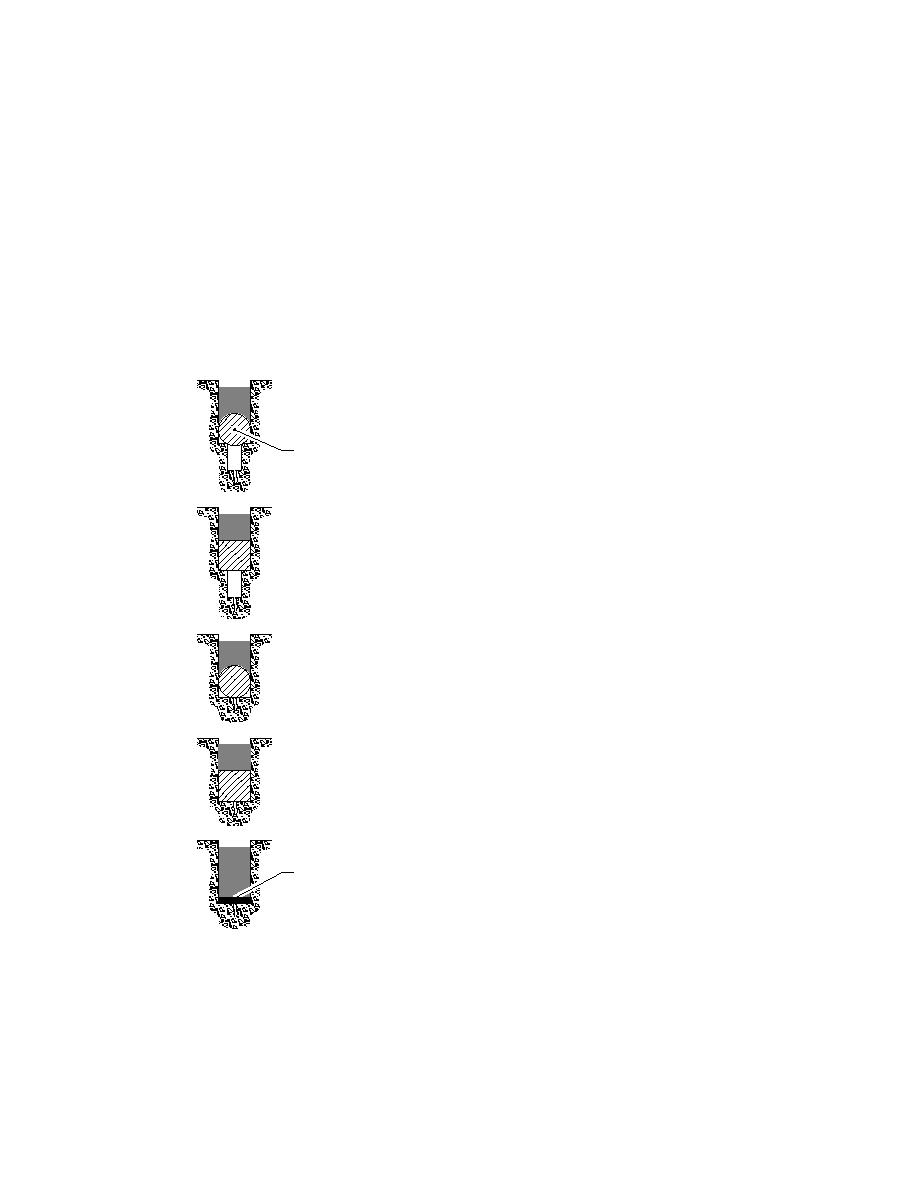
revealed by a selection of analysis results and ex-
the structural performance of seals is of great in-
perimental measurements, is reviewed.
terest to civil and pavement engineers. Although
it is generally recognized that the low-tempera-
ture extreme of the seasonal temperature cycle can
Basic structural geometry and
lead to failure of the seal if the material hardens
loading configurations of seals
In general, portland cement concrete pavements
significantly and the seal is extended by the move-
are constructed with regular joint patterns and
ment of the joint or crack (e.g., ACI 1993, Beech
spacing to avoid cracking of the pavement from
1985, Catsiff et al. 1970a), very little work has been
thermal response and shrinkage of the concrete,
conducted to quantify the effect of low-tempera-
whereas asphalt concrete pavements are rarely con-
ture variations on the structural response of seals.
structed with built-in joints. When cracks are sealed
In this section the basic geometry of seal structures
in asphalt concrete pavements, where crack pat-
and their loading is discussed; conventional ex-
terns can vary from regular spacings of relatively
perimental techniques for studying pavement joint
straight transverse and longitudinal cracks to ir-
and crack seals are described; and the mechanical
regular patterns of meandering cracks, it is con-
response of seal structures to joint movements, as
ventionally recommended that butt joint reser-
voirs be formed along the cracks using sawing or
routing construction techniques (e.g., Lynch 1990).
Some authors, however, without presenting analy-
ses to support their contentions, have suggested
that seal performance is not improved by this tech-
Backing Rod
nique (Panek and Cook 1984). Further, in the case
of reflection cracks in asphalt concrete overlays of
portland cement concrete pavements, where the
crack patterns typically follow the regular joint
pattern of the portland cement concrete pave-
ment, it is also conventional practice to construct
butt joint reservoirs along the cracks by sawing or
routing the cracks. For these reasons little distinc-
tion is made in this section between seals formed at
joints and at cracks and between seals in portland
cement concrete joints and in asphalt concrete
joints, although the term crack is used in refer-
ence to asphalt concrete pavements.
In an engineering design context, a pavement
joint or crack seal formed from a sealant can be
described as a long structure with a butt joint cross
section such as one of those depicted in Figure 7.
This figure shows typical seal cross sections in joint
and crack locations with variations of joint prepa-
ration, uses of backing rod and separating tape,
and seal geometries. Often in practice the construct-
ed cross sections will deviate from the ideal con-
figurations illustrated due to construction irregu-
Separating Tape
larities, backing rod installation or irregularities
in the crack or joint. For crack seals in particular,
it is also likely that there will be variations along
the length of the seal as a result of the meander of
the fracture in the pavement surface, and it may
Figure 7. Butt joint seal cross
sections in joint and crack loca-
be that a joint reservoir is not prepared during the
sealing operation and the seal is formed in the cav-
tions with different practical
ity of the crack. Although not quantified by realis-
variations of joint preparation,
uses of auxiliary materials and
tic structural analyses of seals, it is generally recog-
seal geometries.
nized that when there is significant deviation from
9



 Previous Page
Previous Page
